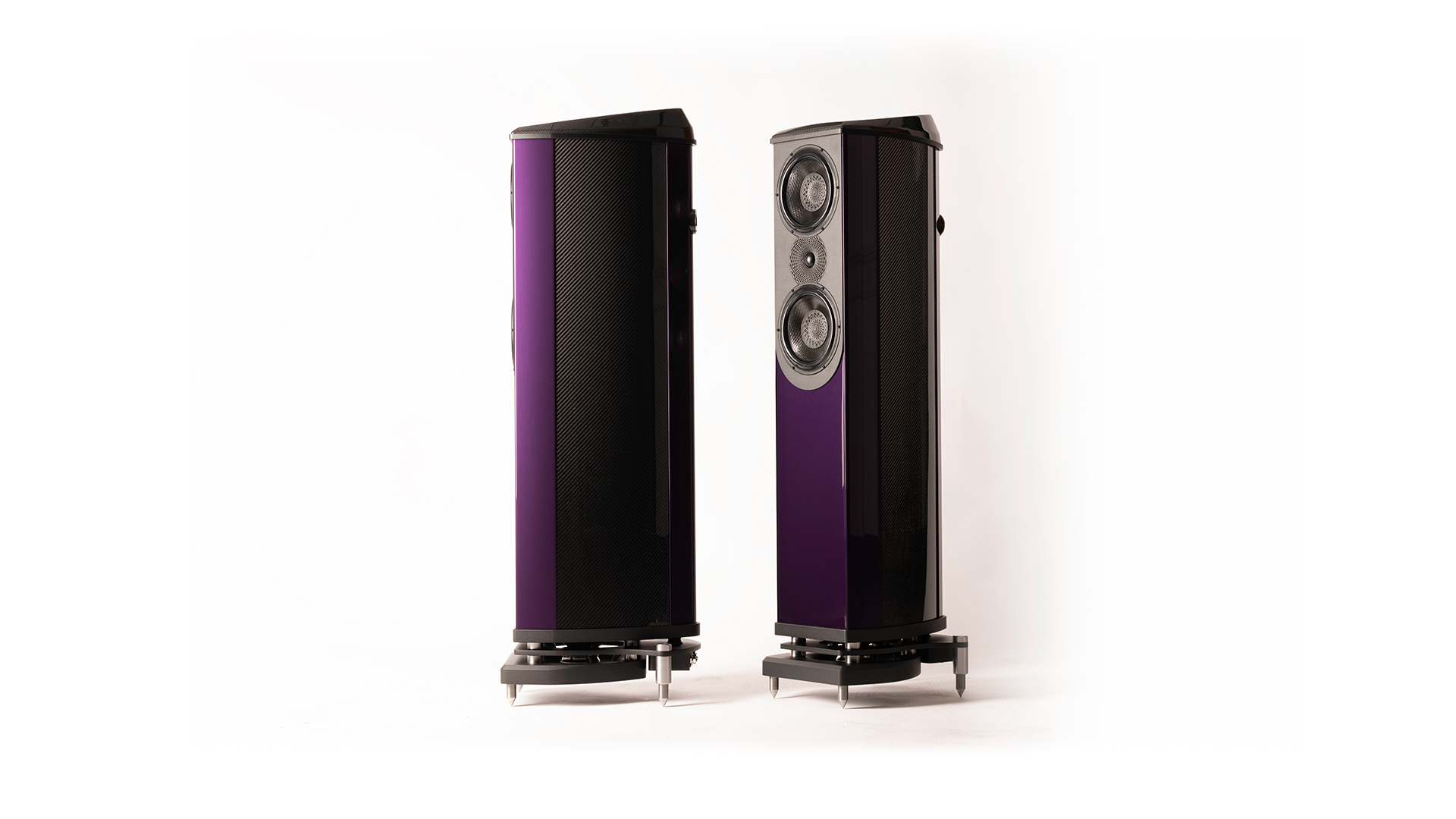
We listen to hundreds of products every year. Some are bad, many are good and the odd few are truly excellent. But then, once or twice in a decade if we’re lucky, we come across something as sublime as Wilson Benesch’s A.C.T. 3Zero.
Now, we’re no strangers to Wilson Benesch’s speakers. We’ve reviewed and liked a number of them over the years, and back in the late ’90s even used a pair of the original A.C.T. One in our main reference system. Those floorstanders were the brand’s first speakers and set the template for everything that has followed. The One’s DNA clearly still runs strongly through the 3Zero.
Those originals pioneered the use of curved speaker cabinets; the shape reduced the build-up of internal standing waves, but in our opinion, that wasn’t the most important part. The clue lies with the initials A.C.T., which is an acronym for Advanced Composite Technology. What does that mean? In the case of the One that meant carbon fibre; a material that even today seems exotic in the context of a speaker cabinet.
The A.C.T. One combined carbon fibre, metal and wood to produce a wonderfully elegant enclosure that was class-leading when it came to balancing rigidity, inertness and resonance control. Compared to the standard rectangular wooden boxes made by most of the competition at the time, and even now for that matter, this Wilson Benesch design was light years ahead. Drive units? Originally, the company bought in drivers made by respected Danish OEM specialist Scanspeak, but over time and numerous generations of the speaker, these were changed to in-house engineered units.
Design
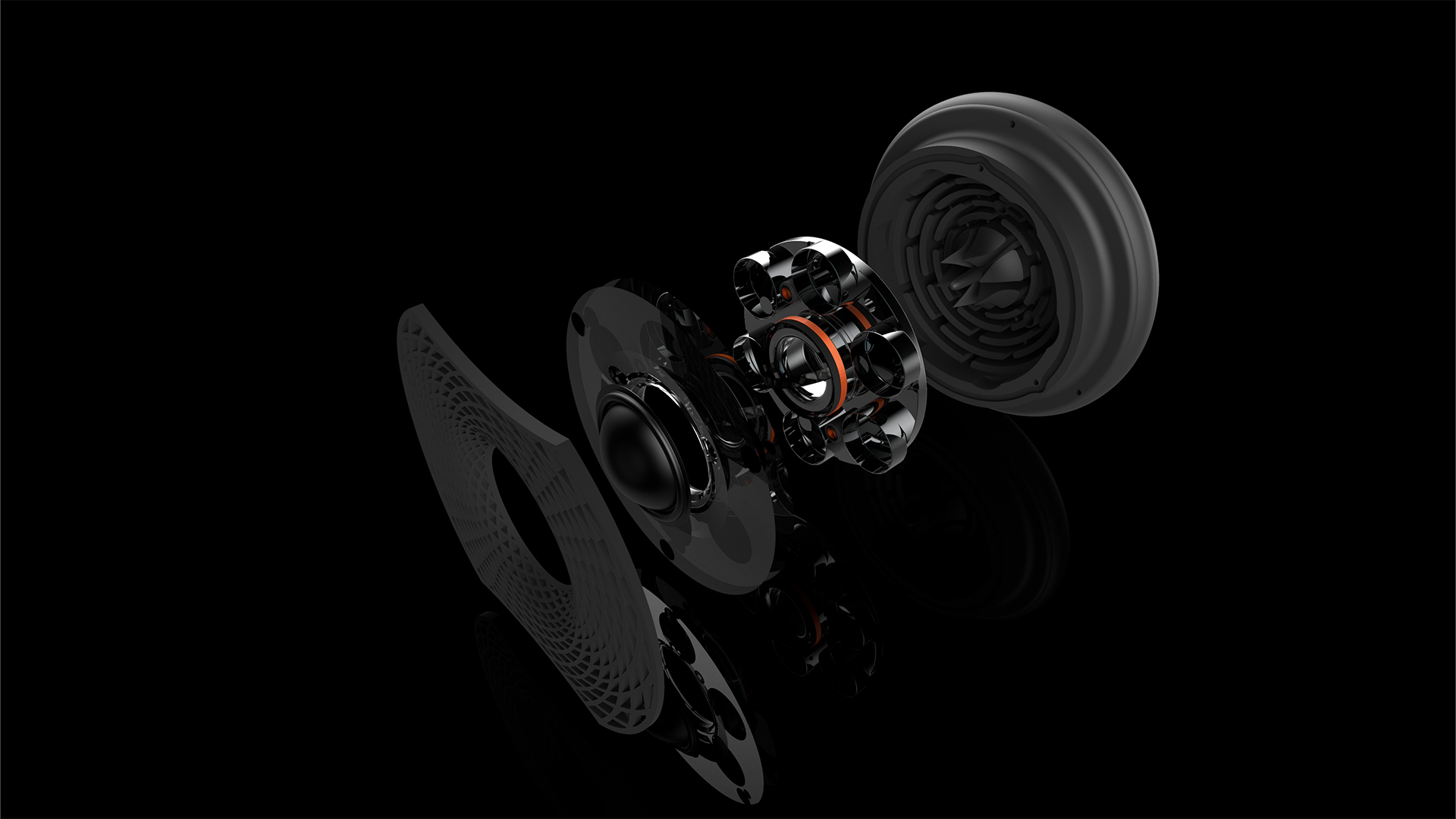
Fast forward to today and it is fair to say that the new A.C.T. 3Zero are arguably the most significant variant yet. Why? They mark the move away from carbon fibre to a biocomposite that is claimed to deliver a better sonic performance while being a more natural, renewable and sustainable material. This biocomposite material was developed as part of a pan-European research project financed by the EU to the tune of €7.4million. The aim of the project, which combined the talents of numerous universities working with both small and large businesses, was to develop alternatives to oil-based non-recyclable materials.
This new biocomposite forms a large U-shaped monocoque that makes up the sides of the A.C.T. 3Zero. It is claimed to be stiffer and better damped than the carbon-fibre composite piece the company used previously. This new monocoque is added to an aluminium front baffle, rear spine and base together with a sloped carbon fibre top panel. This entire structure is then held together by 13mm internal steel tensioning rods to create an impressively rigid and well-damped 113cm tall enclosure.
Wilson Benesch’s in-house drive units are almost as impressive. The Fibonacci tweeter is a 25mm hybrid design that uses a silk dome reinforced by carbon fibre strands which add rigidity to the centre of the dome and around the sides. This is claimed to improve all aspects of its performance and allows the tweeter to reach 30kHz. That distinctive faceplate is 3D printed. It is shaped to improve dispersion and helps to deliver a more even frequency response. The faceplate is also decoupled from the tweeter assembly and this reduces structure-borne resonances.

Type Floorstander
Treble 25mm silk/carbon hybrid Fibonacci tweeter
Midrange 170mm Tactic 3.0
Bass 170mm Tactic 3.0 + 2 x 170mm Tactic drivers used in isobaric configuration
Sensitivity 89 dB/W/m
Impedance 6 ohms (minimum of 4 ohms)
Size (hwd) 113 x 19 x 77cm
Weight 48kg
Wilson Benesch has always preferred simple crossover designs and you can’t get any simpler than connecting the amplifier directly to the midrange unit. Most conventional 17cm units would struggle to deliver good results, but not the company’s new Tactic 3.0 driver. Here it has a dedicated volume inside the 3Zero’s cabinet that is vented from the rear. Without the help of a filter network, this isotactic polypropylene-coned unit is left to roll-off mechanically at both ends of its operating range. This could quite easily result in massive distortion and an uneven response curve. But with careful development, and that includes the distinctive 3D printed dust cap designed to control cone resonances, Wilson Benesch has achieved admirable results.
The lower of the two front baffle-mounted 17cm Tactic 3.0 drivers is a dedicated bass driver. It too enjoys a separate space inside the cabinet, though this time the volume of air is fully sealed. But the drive units count doesn’t end there. You’ll find another two of the Tactic drivers sitting in the base of the 3Zero and they work in an isobaric arrangement, something that delivers great results if designed properly.
Isobaric designs aren’t very common because they need an extra (hidden) drive unit that adds cost and complexity to the design, but such a configuration does yield greater bass extension for a given cabinet volume than conventional alternatives such as reflex ports or passive radiators.
Build
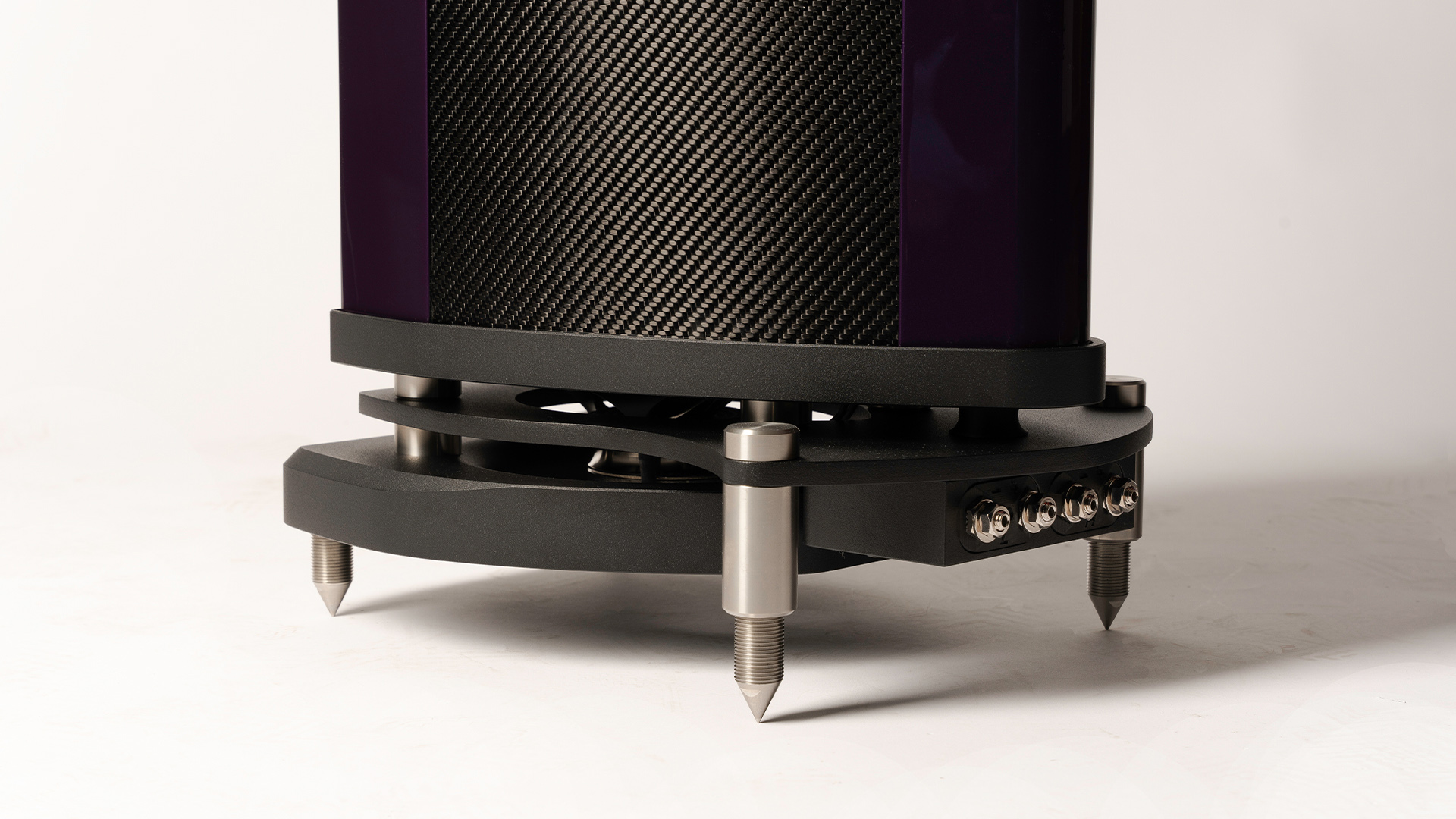
The price point demands top class build and finish and the A.C.T. 3Zero certainly doesn’t disappoint. These speakers are beautifully finished and feel wonderfully solid. Tap any of the sides and all you’ll get is a dull, heavily-damped thud and sore knuckles. Every part, from the nicely machined bi-wire speaker terminals to the impressively chunky floor spikes, has the aura of thorough engineering.
On the whole, we feel these speakers look understated, clean and elegant. Given how huge some of the alternatives are at this level, the Wilson Benesch even qualify as compact by high-end speaker standards. Our only complaint is that the multi-layered plinth arrangement at the base looks out of character and a little too busy. We hope the company can make this look less awkward for the next generation.
There are plenty of finish options as you would expect, but the prices we’ve quoted are for the standard black versions. Expect to pay a decent premium for the more exotic finishes.
Any speaker at this level positively demands a high-quality partnering system. We stick with our reference set-up of Naim ND555/555 PS DR music streamer, Technics SL-1000R/Kiseki Purpleheart record player and Burmester 088/911 MkIII amplifier for most of our listening. We also have a Goldmund Mimesis 37S/Telos 300 three-box pre/power to hand to see how the Wilson Benesch react to a different, more analytical character of amplifier.
The A.C.T. 3Zero are relatively sensitive speakers at a claimed 89dB/W/m sensitivity and have a nominal impedance of 6 ohms that drops to a minimum of 4 ohms. None of these numbers are extreme, so this seems a case of having a partnering amplifier that’s more about quality than outright power. Though, given the 3Zero’s performance, something with a bit of grunt will certainly make the most of the speaker’s excellent dynamic abilities.
Sound
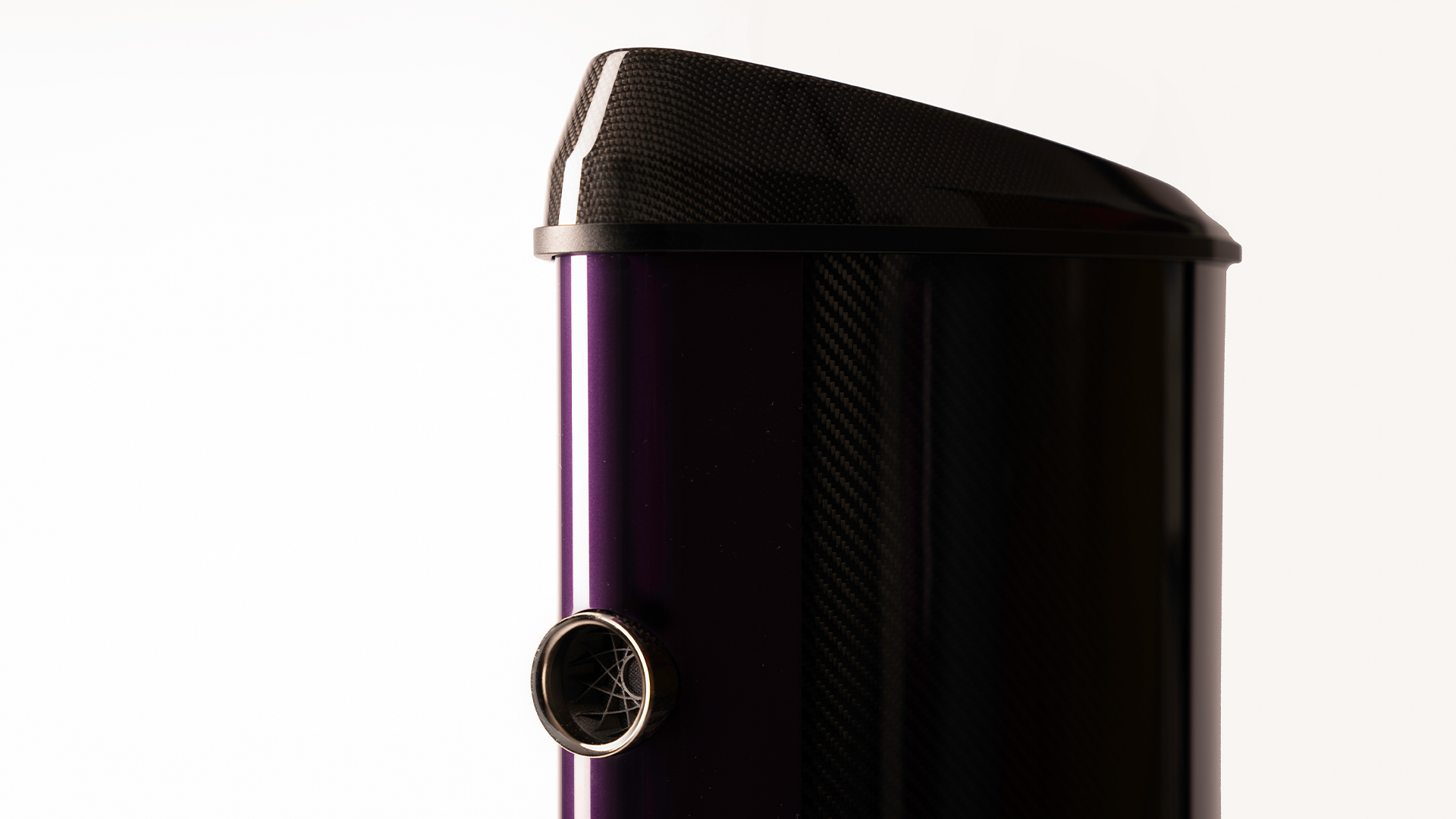
It pays to take care when positioning these speakers. They are capable of exceptional stereo focus and layering if placed with care. We have them around a metre out from the rear wall of our 5m x 7m test room and well away from the sides. This gives us a gloriously wide spread of sound but also a pleasing solidity in the way sound is presented. The stereo sweet spot is relatively narrow though, so these aren’t speakers that encourage much freedom in the main listening position.
Once up and running it is fair to say these Wilson Benesch are exceptional performers. We can’t recall hearing an alternative that matches the A.C.T. 3Zero’s transparency or insight. These speakers uncover previously unheard subtleties in familiar music – low-level acoustic information in Arvo Pärt’s Tabula Rasa comes to mind – and render such complex recordings with control and composure that is truly straight out of the top drawer.
Resolution – the ability of these floorstanders to reproduce fine detail – is exceptional. The A.C.T. 3Zero reveals a massive amount of information and is perfectly capable of taking a recording apart for analysis. But, given a suitably well-matched system, it prefers to deliver all that detail in a cohesive and musical way. That’s one of the things we really like about these speakers; for all their impressive technical abilities, they concentrate our attention on the emotional impact of the music. We listen to the award-winning Broadchurch OST by Olafur Arnalds and are taken right back to the sadness and pain at the heart of that show. The 3Zero’s ability to communicate dynamic nuances is second to none in our experience, and we think that ability is partially a direct consequence of the cabinet being so well controlled.
Just as importantly, we love the way these speakers render instrumental textures. Their impressive transparency allows the natural timbre of instruments and voices to shine through, giving us a range and variation of tonal colours that’s extremely rare. It is a characteristic that draws us into the music and keeps us hooked.
Play a recording as demanding as Stravinsky’s The Rite Of Spring and these floorstanders deliver the music in a full-throttle manner, thumping out the wide-ranging dynamic swings with confidence. There is plenty of power and punch here, with a bass that’s second to none when it comes to grip and definition. We do not doubt that there are (larger) rivals that deliver more bass and punch it out with greater power, but we certainly haven’t heard anything that tracks lows with such faithfulness.
Take a step back and you’ll find the 3Zero’s tonal balance is superbly judged. To our ears, it is as neutral as they come with both frequency extremes integrated so well that it becomes hard to talk about them as separate entities. This is a wonderfully unified sound that rivals what we hear through the very best electrostatic designs and is made all the more impressive by knowing that there are no less than five separate drivers involved. Note, those very same electrostatic designs can’t match the Wilson Benesch in punch and attack.
Our time with these speakers is a blur of music as we work our way through our collection, finding musical treats around every corner. Poor recordings are revealed as such without the speakers going out of their way to make things worse, while better recordings such as Kind Of Blue by Miles Davis or Michael Jackson’s Off The Wall burst through with musical energy firmly intact.
Verdict
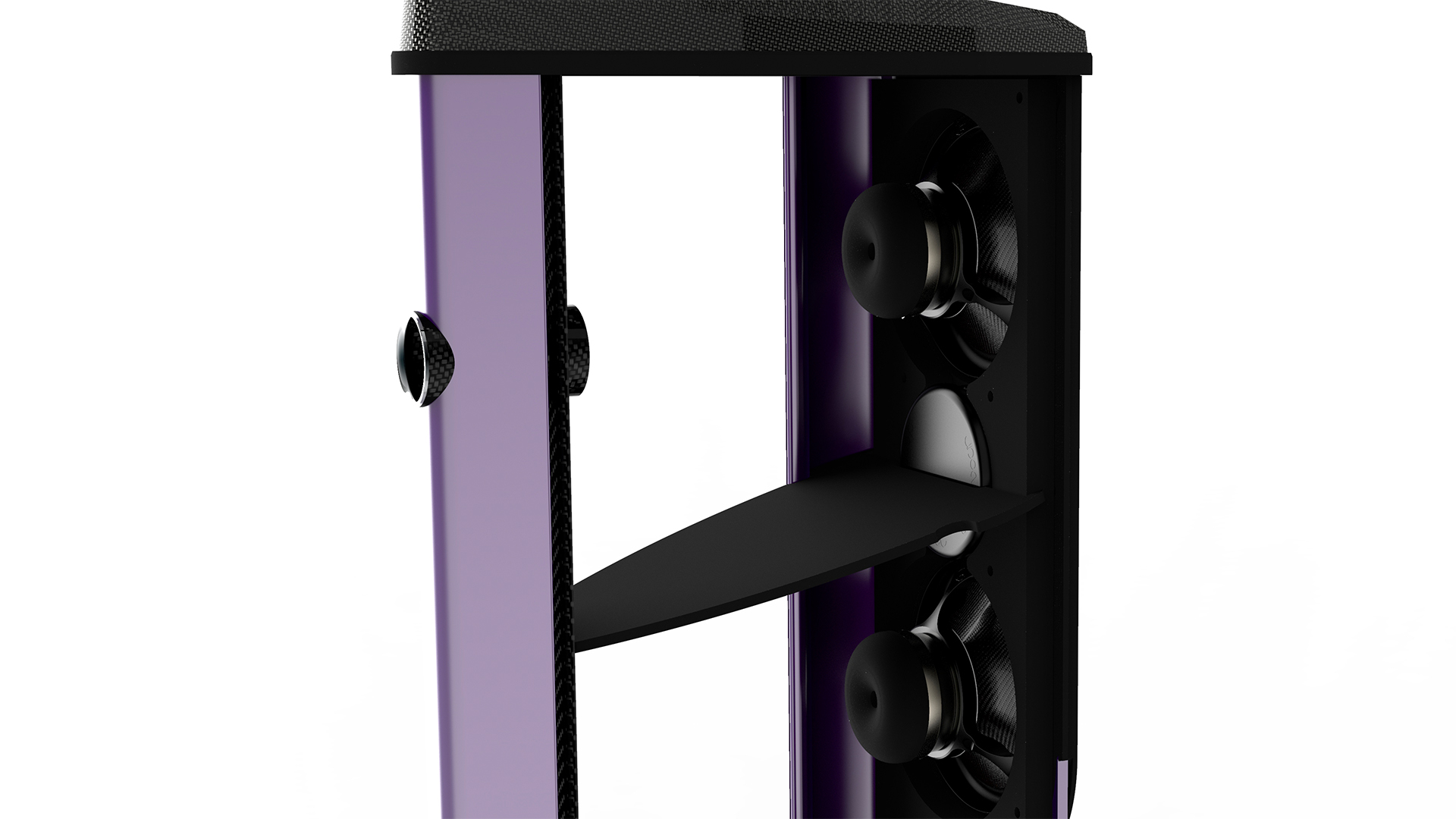
Judge these speakers by hi-fi criteria such as tonal balance, stereo imaging or detail resolution and they ace the test. Judge them on the ability to communicate the emotion in music, and they are similarly successful. Given a suitably talented system, these Wilson Benesch A.C.T. 3Zero are easily among the finest speakers we’ve ever tested.
Wilson Benesch… we salute you.
SCORES
- Sound 5
- Build 5
- Compatibility 5
MORE:
Read our review of the PMC Fact Fenestria
Also consider the ATC SCM50







